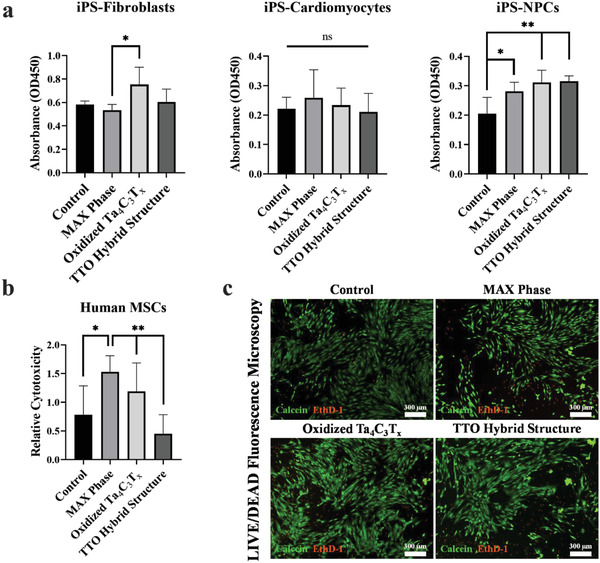Figure 6.

Assessment of biocompatibility of the Ta4AlC3 MAX phase and Ta4C3T x MXene‐tantalum oxides materials with human cells. a) The MAX phase, oxidized Ta4C3T x , and TTO materials were cocultured with human iPSC‐derived‐ fibroblasts, cardiomyocytes, and neural progenitor cells (NPCs) for 24 h. WST‐1 proliferation assay was performed to evaluate cytocompatibility of materials. Our data demonstrate that MXene was compatible with all three cell types, as coculture with biomaterial did not affect cellular proliferation compared to control group. b) Cytotoxicity evaluation of the MAX phase, oxidized Ta4C3T x , and TTO hybrid structure was assessed by LDH release after coculturing with human MSC for 24 h. LDH data show no significant difference among different MXene groups and the control group. c) LIVE/DEAD assay was performed using the fluorescent dye to assess biocompatibility of human MSC with the material. After coculture with different forms of MXene, MSC were stained with Calcein (for live cells, green) and EthD‐1 (for dead cells, red). Images were captured using Nikon Ti‐2 fluorescent microscope. No significant difference in viability between different groups was detected. (n=3–4 per group). (“ns” = statistically no significant difference, * = p < 0.05 and ** = p < 0.01).
